Our procedural powertrain system might seem like it’s just for cars, however it is anything but that. We are adding aircraft engines that can interact with powertrains in the same way the car engine can, using a brand new procedural propeller part you attach to the front (or to a driveshaft anywhere else!), and it all interconnects nicely to let you do just about whatever you want. You can power a car with an aircraft engine, or an aircraft with a car engine if you're so inclined. You can power multiple propellers with a single engine if you can connect it up with the proper driveshafts and powertrain parts. It’s all in your hands, and it’s something we’re really excited about.
The rest of the aircraft engine section of this post will be handled by Andrew:
The Engines
We are starting with three distinct procedural engine types to cover the most popular styles.
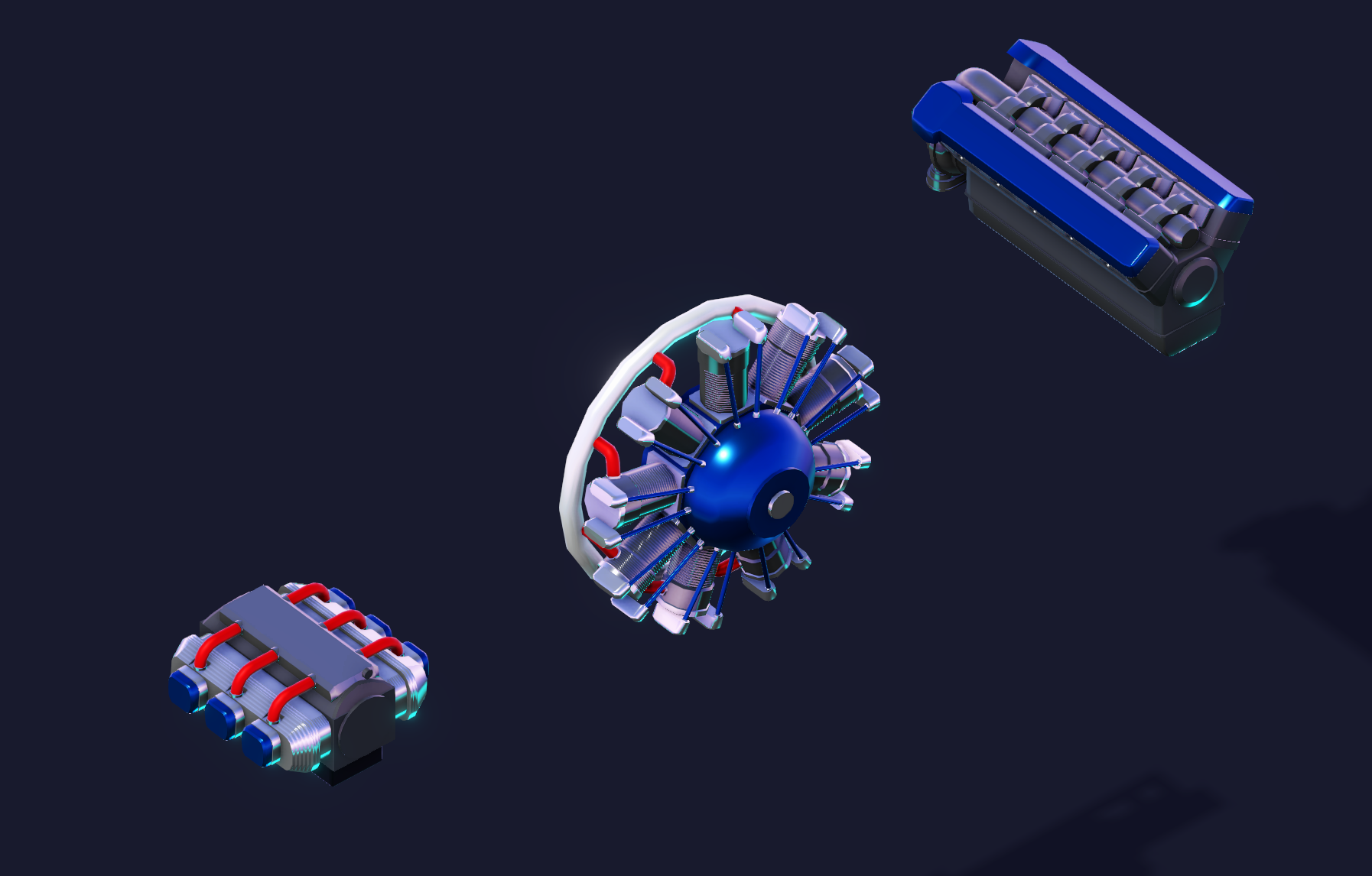
Flat Aircraft Engine
This is your bread and butter for general aviation. Compact, air-cooled, and lightweight, it’s perfect for small trainers or bush planes. It doesn't have the raw grunt of the bigger engines, but it fits where others won't and keeps your weight down.
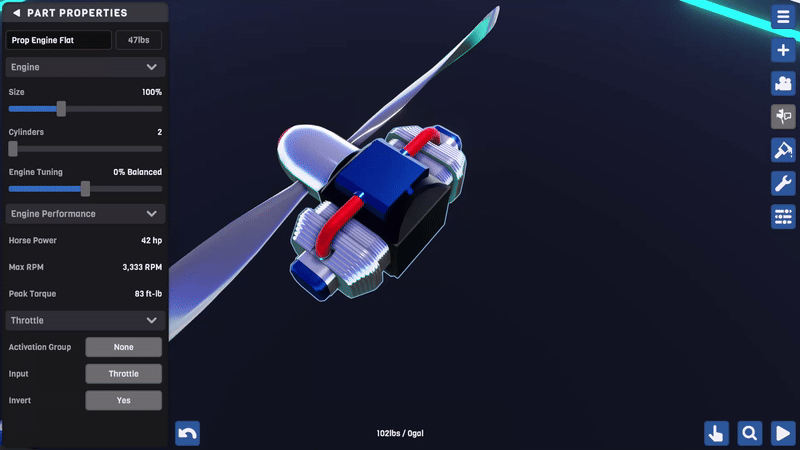
Liquid Cooled V-Engine
If you want speed, this is where you start. Inspired by legends like the Merlin engine found in the P-51 Mustang, this engine is larger, heavier, and significantly more powerful.
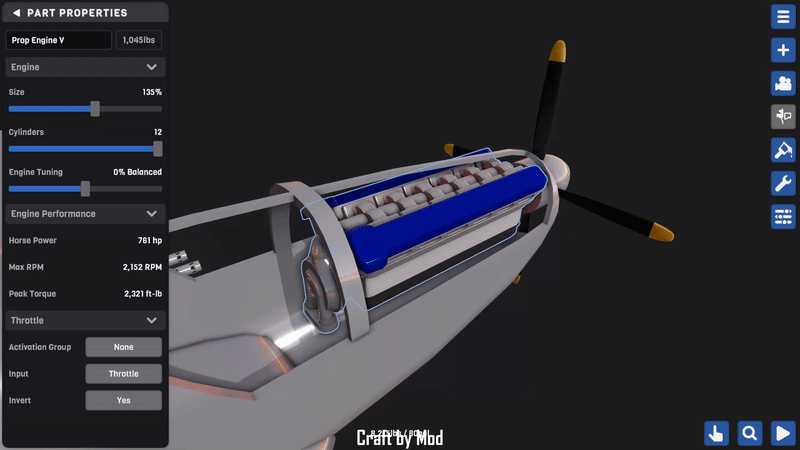
Radial Engine
Big, heavy, and absolutely full of awesome. This is for when you want to move a lot of air and look good doing it. It might not be the most aerodynamic or efficient option, but it makes up for it in sheer style.
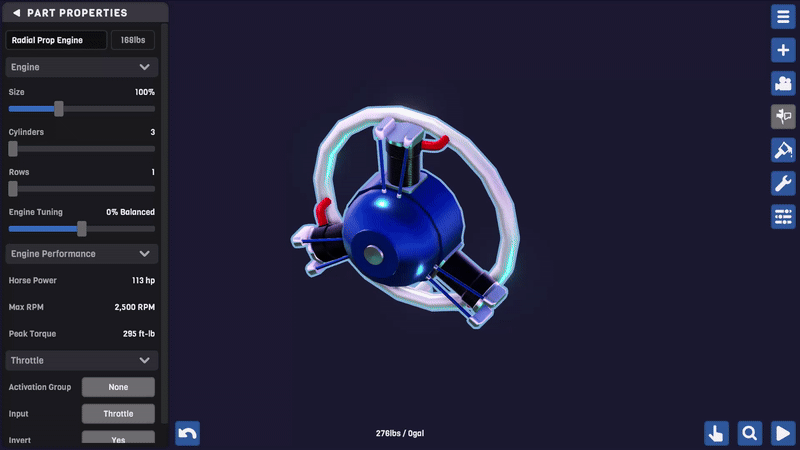
The customization here is impressive. You can stack cylinders to your heart's content. We’re talking up to 3 rows of 9 cylinders each. That is a 27-cylinder monster capable of putting out over 1,000 horsepower without a supercharger.
The New Propeller Assembly
An engine is only as good as the thing it spins. The Propeller Assembly has been completely rebuilt to keep up with the new physics system.
You still have all the customization you loved in SP1: blade count, diameter, blade width, and pitch. But we’ve added some new toys for the engineers among you. You can now adjust the Hub Scale for better visual integration with your spinners, and crucially, you can now adjust the Twist Angle.
Real propeller blades aren't flat; they twist from root to tip to ensure the angle of attack is efficient across the whole blade. Now, you can fine-tune that twist to optimize your prop for climbing, cruising, or speed.

Prop Physics
The new Propeller Assembly utilizes Blade Element Theory (BET) for its physics simulation. Instead of treating the propeller as a single disc, the game now breaks the blades down into multiple segments. It calculates the angle of attack, velocity, lift, and drag for each segment of the blade individually and sums them up.
If you pitch your blades too aggressively, you’ll feel the engine bog down and your RPM drop as the drag torque spikes. If you dive too fast with the throttle cut, you’ll see the prop windmill and actually add torque into the powertrain system.
It is a level of fidelity that simply wasn't possible in the first game, and when combined with the new procedural engines and powertrain, it makes flying feel more alive than ever.
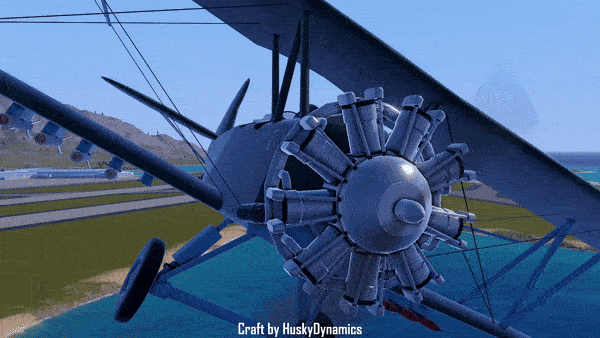
Superchargers
Let's move back over to car engines for a sec. A common way to add extra performance to your engine in real life is to mechanically force extra air into it. This is called a supercharger, and now it’s something you can have in SimplePlanes 2. There are a variety of different options to choose from, all affecting your engine’s performance in different ways. So experiment and see what works best for you! Note though that the content you’ll see here is still in development and is therefore subject to change.
I am admittedly not much of a car person so I’m not very qualified to explain what the different types of supercharger do, so Kevin is here to explain some of what you’ll see in the game in more detail:
- Twin-Screw Supercharger: In performance terms, equipping this will deliver an immediate and massive power boost across the entire rev range, but especially from a standstill. It’s the go-to for drag builds and muscle cars that need to launch hard.
But a supercharger is only as good as the air it breathes. That’s where our new intake parts come in, each having a different impact on performance and visuals.
OEM Air Intake: This is your "stock" setting. It provides balanced, reliable performance with no frills and no penalties. It’s also the lightest option.
Cold Air Intake: The model features a wide, less restrictive intake pipe and a large, exposed conical filter with left, right and straight orientation. Its main purpose with its positioning is to draw in cooler, denser air from outside the hot engine bay. Equipping a CAI gives you a modest but noticeable horsepower gain. Cooler air is denser air, which means more oxygen for combustion. It’s a great supporting mod for your supercharger, helping it breathe easier and make more power efficiently.
Ram Air Intake: This one is all about aggression and aerodynamics. The key visual differentiator is the sealed airbox with a dedicated scoop or inlet in three variants, often modeled to integrate with the hood. It's big, it's mean, and it can give a serious boost to horsepower.
Every filter, and every scoop you see in our models is there for a reason, rooted in real-world automotive science. Our goal is to make your customization choices meaningful, both visually and mechanically.
If you like what you're seeing, please consider wishlisting SimplePlanes 2 on Steam. If you'd like to see bits of these blogs early, consider joining our Discord Server!

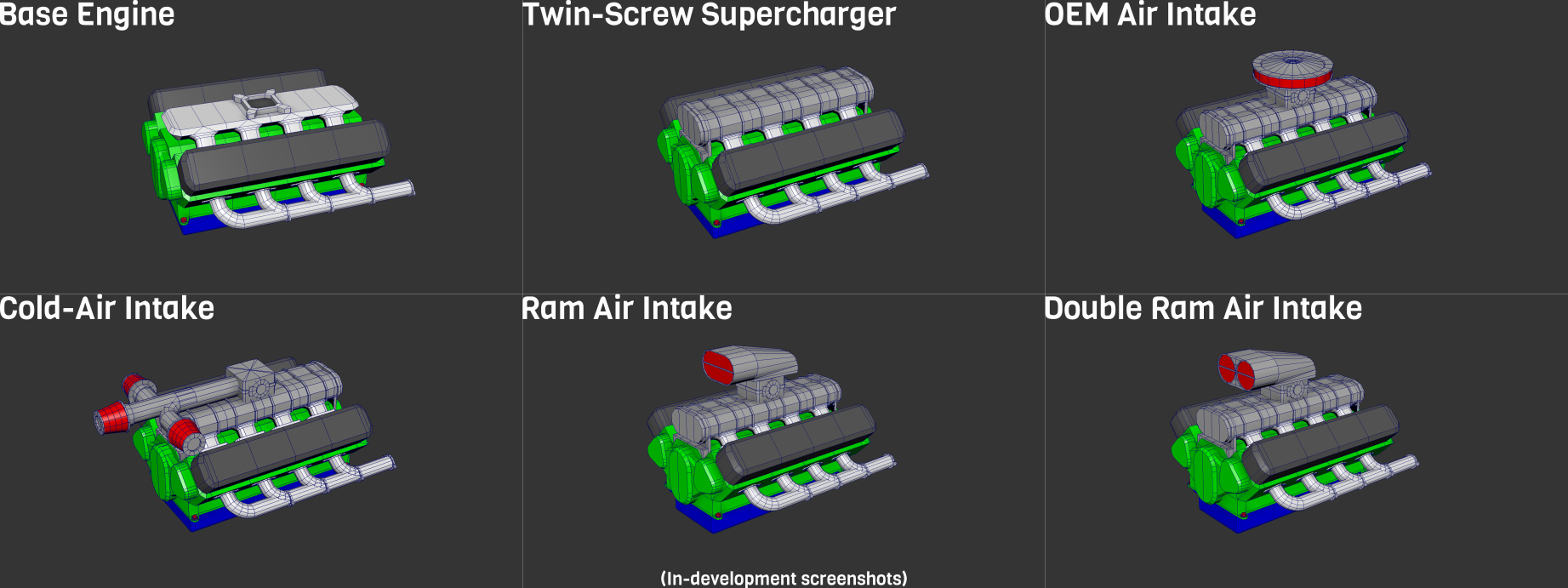
can you add the same but for main and tail rotors, or adding a drive train for them??
holy update for car enthusiasts
w jundroo
YES
FINALLY!!!!!
@Superliner350 That would be good. Doesn't J:NO have ship propellers?
Never touched them myself...
Is underwater propelants for submarines are included?
Will the new propeller engines mean we'll also get new stock craft? Boy, there's gonna be a lot!
Add in the old ones (pls pls pls) and there'll be a lot for new players to do even without downloading or building anything! New instructions/descriptions with a bit of history about them could be good for some of the older stock craft (e.g. original Pigpen, saying it's an old SP1 craft predating VR and the like).
Advanced stock craft, like SP2's and the SPVR ones, are cool and all, but it's important to give new players something a bit more accessible to use as a model (after all, even SP2's simplest stock craft were made by very experienced players). The old stock craft, pre and post fuselage, are excellent for this since everyone has them.
I recognise that Jundroo may be reluctant to keep around the less flashy and glamorous of SP's assets since they don't look as nice in the advertisements, but it's important to both remember where the game came from and also to, y'know, have actual SIMPLE planes.
If we're getting superchargers, will we also get turbochargers? IIRC the P-47 was basically built around a giant turbocharger, giving it the jug shape it's nicknamed for.
I should hope that cylinder limits can be overridden with Overload. I want a 300 cylinder radial and I want it now!
... Unless this game has a heat mechanic? Probably not.
HELLL YYAAAHHHHH READIALS!
radals
rdaildas
fuc
daraidlas
RADIALS
finaly
... darn
BUH!
Lovely
Great!